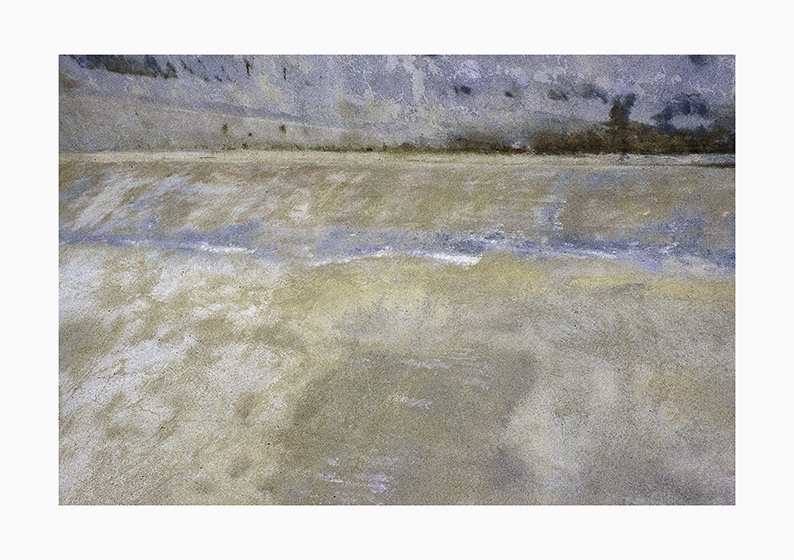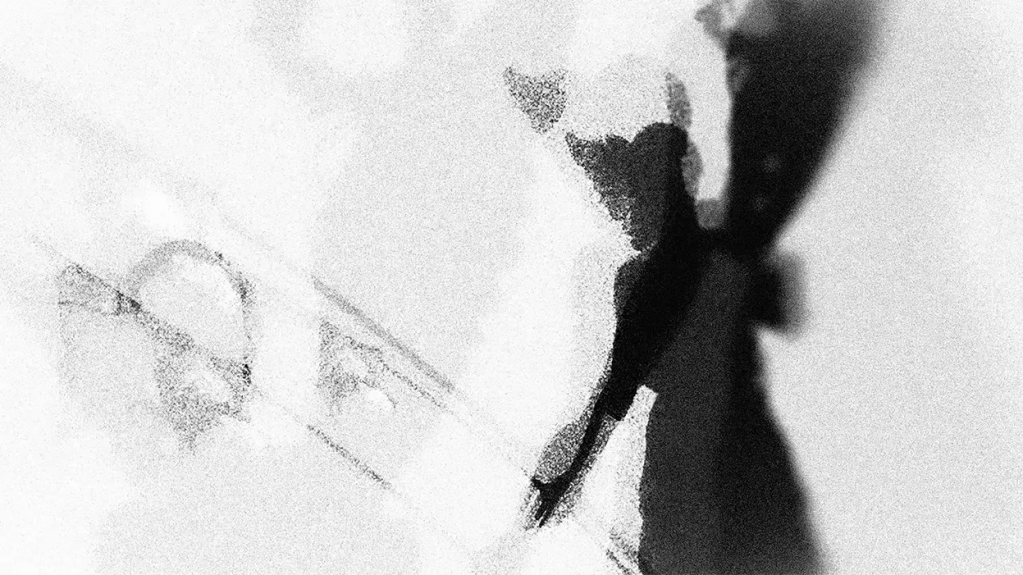
David H. Keller’s 1932 short story, The Thing In The Cellar, is one of my favourite things. Here’s why.
The title of Keller’s short story has me from the get-go. Putting those two words together – thing and cellar – is like the happy meeting of fat and sugar. I lick my lips. I’m certain there are people who disapprove of the use of the word thing, seeing only a hole where a better chunk of vocabulary should be. These are the same people who don’t understand the extraordinary and unrivaled eloquence of a well-timed swear word, or think the word ‘nice’ should be banished for its beigeness, when ‘nice’ is one of our most delicately shaded adjectives, comprising as it does the full tonal range of sarcasm, insincerity, evasiveness and passive aggression.
The word thing, particularly when used by writers of horror fiction, is always a richly chimerical, hyrdra-headed device, a purposeful and powerful non-commitment that forcefully commits the reader’s imagination to an act of shaping the unknown. It is a word that promises everything by eliding detail. It is a big lovely game of a word. Consider the following; The Thing With Two Heads (1972), The Thing That Couldn’t Die (1958), Zontar, the Thing From Venus (1966) and the short story, The Thing On the Doorstep (1937), from the thingmeister himself, H.P. Lovecraft. Oh, how my imagination hurries to meet these unnamed hulks, these blobs, these slimy, jellied mysteries!
One of the most celebrated literary and filmic ‘things’ is the alien visitor in John W. Campbell’s Who Goes There?, the 1938 novella first adapted for the screen as The Thing From Another World (1951) and then again as The Thing in 1982. Fittingly, the ‘thing’ in Campbell’s story is a nasty shape-shifting alien that mimics physically whatever it touches – which is exactly how the word thing operates too, its amorphous state leaving it free to assume the form of all our own personal fears, mirroring them intimately, reflecting them back.
Cellars, like attics, are very special confections of joists, bricks and mortar. They are not ordinary interiors, however ordinary. They are untrusted as domestic spaces. They are Judas rooms. Cellars are slippery, sliding so easily into the realm of metaphor it is a wonder they can ever support the buildings built above them.
Cellars are where you put stuff so you no longer have to look at it or think about it. To consign something to the cellar is not, in fact, to go as far as getting rid of it or vanishing it or even moving past it. It is to decide to keep something even as you choose to conceal it from your everyday routine. Cellars are the subconscious of a house and of its occupants, past and present, a handy storage solution for our repression.
It is down to the cellar finally that Lila Loomis must venture in order to plumb the depths of Norman Bates’ psychopathy in Psycho (1960). This is where the desiccated corpse of ‘mother’ sits so patiently, where Norman will soon appear in his blue periwinkle dress, carving knife in hand. The cellar is where the extent of Norman’s repression is collapsed and collapses. Down here is where the past unburies and the fixations of childhood disinter.
Perhaps the greatest essaying of our communal ambivalence for these domestic burial grounds is found in Jan Švankmajer’s Do Pivnice (1983), in which a little girl is required to collect a basket’s worth of potatoes from the cellar. While the specifics of what she finds down there in the dark are bizarre and surreal, they chime intimately with more universal childhood traumas: the witchiness of old people, the conviction inanimate objects have secret, furtive life, and the dark, of course, always that.

A face only a son could love: Mrs Bates down in the fruit cellar, Psycho, dir. Alfred Hitchcock, 1960

The little girl goes down into the cellar, Do Pivnice, dir. Jan Švankmajer, 1983
The cellar in Keller’s story is no run-of-the-mill oubliette. The writer takes pains to ensure his reader is alerted to certain anomalies familiar to anyone familiar with the trappings of haunted houses. Keller’s opening paragraphs are like the brief exchange in The Shining (1980), when the Torrance family is informed so casually that the Overlook Hotel is built on sacred Indian burial ground, and also like the moment in Poltergeist (1982) when the Freeling family learn their boring, identikit suburban home has been erected over an enormous graveyard. This is Keller suggesting all manner of things by confirming none of them. This is Keller laying down the lore.
“It was a large cellar, entirely out of proportion to the house above it. The owner admitted that it was probably built for a distinctly different kind of structure from the one which rose above it. Probably the first house had been burned, and poverty had caused a diminution of the dwelling erected to take its place.
A winding stone stairway connected the cellar with the kitchen. Around the base of this series of steps successive owners of the house had placed their firewood, winter vegetables and junk. The junk had gradually been pushed back till it rose, head high, in a barricade of uselessness. What was back of that barricade no one knew and no one cared. For some hundreds of years no one had crossed it to penetrate to the black reaches of the cellar behind it.
At the top of the steps, separating the kitchen from the cellar, was a stout oaken door. This door was, in a way, as peculiar and out of relation to the rest of the house as the cellar. It was a strange kind of door to find in a modern house, and certainly a most unusual door to find in the inside of the house — thick, stoutly built, dexterously rabbeted together with huge wrought-iron hinges, and a lock that looked as though it came from Castle Despair. Separating a house from the outside world, such a door would be excusable; swinging between kitchen and cellar it seemed peculiarly inappropriate.”
In a previous MFT, I name-checked Edward Gorey’s The Gashleycrumb Tinies, his alphabet of ghoulish fatalities befalling a series of wey-faced children. A little later, in a discussion of Michael Haneke’s The White Ribbon (2009), I enjoyed exploring our cultural ambiguity for children – our fear for them and our fear of them, and how those fears manifest in the stories we tell ourselves. Only a week or so ago I was talking about Carrie (1976) on here, another child-centred story in which children do horrible things to each other, before having horrible things done unto them, and more recently I shared Silent Snow, Secret Snow (1964), a short black and white film featuring a Midwich Cuckoo who is putting the wind (and snow) up his mother and father and teachers and doctors. I must find narratives in which children have the power to frighten adults supremely satisfying, as I return to them so often. Perhaps it’s because I suspect I was a child like that – not Damien Thorn-style – but rather because I liked feeding daddy-long-legs to spiders. So not for me the more sentimental depictions of childhood, and never for me the more sanitised versions of the darker sorts of stories once deemed entirely suitable for kids.
One of the things I admire about Keller’s The Thing In The Cellar is how uncompromising it is, how richly discomforting. Spoilers ahead, but this is what goes down: a little boy is terrified of the cellar and cannot endure being left in the kitchen. His parents dismiss their son’s fears as an excess of undesirable sensitivity, likewise the family doctor, and together, the three adults conspire to bring about a cathartic epiphany in the little boy by forcing him to confront his most primal fear. At the end of the story, the little boy is dead – and not from fright.
“The mother threw herself on the floor and picked up the torn, mutilated thing that had been, only a little while ago, her little Tommy.”
God, I love this ending. I love it as I love the final scene of Duel (1971), with Dennis Weaver’s everyman so hollowed out by his victory against the killer truck, we know the thing he was trying to survive for – his civilised suburban reality – also lies smoking at the bottom of the ravine. I love Keller’s ending for the same reason I love Sam Peckinpah’s Straw Dogs (1971), because by the time that brutal shit-show is over, everything is ash.
The Thing In The Cellar was written in 1932, but I think it resonates with me so strongly because I’m a child of the 1970s, when the prospect of children dying horribly as a direct result of a failure of parental supervision and/or as the result of the failure of parents to be cognisant of the emotional lives of their children, was a lived reality. Well, no, not my lived reality as such, but the version of it served up to me by the notorious public information films I so associate with my formative years.
Directed by John Mackenzie in 1977, Apaches is a twenty-six minute film depicting the various ways a group of children are killed by misadventure on a local farm. Apaches serves up death my tractor – twice – death by drowning, death by poisoning, and death by crushing. I don’t remember when I first saw this film, at school certainly, likely as part of an assembly, and I am far from unique in regards to the impact this film had on me, and all the other films like it; the one about not playing on railways; the one about not climbing up a pylon to retrieve a Frisbee; the ones about not returning to lit fireworks. Watching other children killed, maimed or abducted successfully by paedophiles was a regular feature of television, and what many of these films had in common was the idea that mums and dads didn’t know what their children might be doing or indeed what danger they might be in, that the lives of their children were unknown to them. I’m reminded of an episode of Tales Of The Unexpected entitled The Fly Paper (1980), adapted from a short story by Elizabeth Taylor, which takes place in a similar universe of disinterested guardians and roaming unsupervised children. In this episode, a young school girl is ultimately lured into the clutches of what we presume are two homely child-molesters – and she doesn’t escape them – hence the title.
Bleak though these endings are, I detect an element of wish-fulfillment akin to that childhood phase wherein we imagine we are adopted, hoping for it in fact, preferring the idea of having been given up at birth to the reality of being bonded by blood to the disappointments we detect in our parents. Similarly, there’s the phenomenon of imagining our own funeral just so we can see our parents grieving, wishing ourselves dead so we can know once and for all we are loved, and if not loved, then noticed at least.
There is little doubting the awfulness of the description of little Tommy’s clawed body at the climax of Keller’s tale, but in addition to feelings of pity, enhancing them even, is approval for the way the author punishes Tommy’s parents for their stupidity. I like to imagine Tommy’s ghost rising out of the meaty remains of his earth-bound body and hanging around for a while to gloat over the suffering of his mum and dad – a fantasy entertained by all children at one time or another, I strongly suspect.

A boy drowns in a slurry pit, Apaches, dir. John Mckenzie (1977)

A school girl is unsettled by the attentions of a stranger, Tales of the Unexpected / The Fly-Paper (1980)
“His father, who only saw the boy at the end of the day, decided that there was no sense in such conduct, and in his masculine way tried to break the lad of his foolishness. There was, of necessity, no effort on the part of the hard-working man to understand the psychology back of his son’s conduct. All that the man knew was that his little son was acting in a way that was decidedly queer.“
“And I am going to nail the door open, Tommy, so you can not close it, as that was what the doctor said. Tommy, and you are to be a man and stay here in the kitchen alone for an hour, and we will leave the lamp a-burning, and then when you find there is naught to be afraid of, you will be well and a real man and not something for a man to be ashamed of being the father of.”
What resonates with me most strongly about The Thing In The Cellar is Keller’s critique of a certain mode of fatherhood. True, the boy is killed by some monstrous threat undisclosed, but he is made vulnerable to that threat because his father’s expectations of Tommy’s gender puts him in harm’s way. This is as much a story about masculinity as it is about monsters and Keller makes all of this very clear. The author tells us little Tommy ‘loves his mother’. We know he’s an unusually sensitive boy, more intelligent than many in his own year group at school, and certainly more intelligent than his parents. His father disapproves of his son’s hysteria in regards to the cellar (hysteria being a woman’s failing obviously), and even more so the way his son kisses the lock on the cellar door, an act as offensive to him in its effeminacy as it is bizarre.
Given the dynamic here, it’s hard not to read the use of Keller’s phrase ‘decidedly queer’ in its more modern context. The father wants a real boy for a son, not some highly-strung mummy’s boy afflicted by a surfeit of imagination. Had Tommy not been killed, I predict he would have learned to repress his sensitivity to earn the approval of his father. He would have grown up ashamed of his own bandwidth, suppressing his intuition, denying himself access to the full spectrum of his emotional potential. There are other ways for children to be eaten up.
“What killed him, Doctor? What killed him?” he shouted into Hawthorn’s ear.
The doctor looked at him bravely in spite of the fear in his throat.
“How do I know, Tucker?” he replied. “How do I know? Didn’t you tell me that there was nothing there? Nothing down there? In the cellar?”
I always feel disgruntled by the closing moments of King Kong (1933). After Kong has been gunned down from the top of the Empire State and plunged to his death, Carl Denham has the temerity to suggest it wasn’t the planes that killed the giant gorilla, but ‘beauty’. I call bullshit on that, just as I call bullshit on the idea that what killed little Tommy in Keller’s short story was the thing in the cellar. Kong was killed because Carl Denham is a selfish macho prick who puts Kong in harm’s way to appease his own ego, just as Tommy is killed because is father decides to remasculate him by nailing open the cellar door.
So no, it wasn’t some formless monster that killed this little boy, some clawing, ancient, supernatural beast, cosmic maw or crawling, Lovecraftian blob, and the thing that killed little Tommy Tucker does have a name after all: masculinity, the toxic kind.






Leave a comment